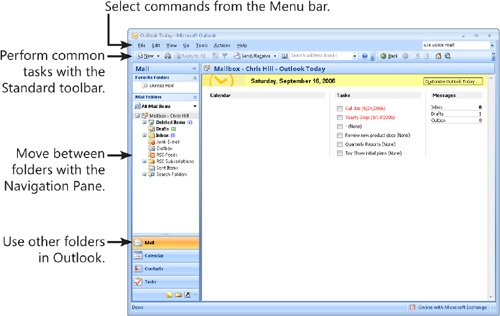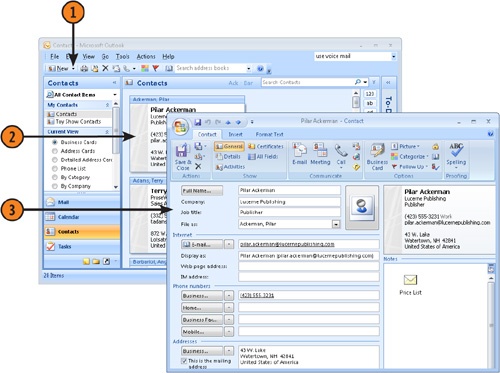Microsoft Outlook is designed to help you manage almost every aspect of your day. With Outlook you can manage your e-mail, contacts, calendar, and tasks. You can even keep track of your phone calls, time spent on documents, and other tasks and events.
Even with all of the features it contains, Outlook is easy to use. The program provides simple forms for creating and viewing messages, meetings, tasks, and other items. You have several options for viewing your information in Outlook, and the program offers the ability to customize the existing views and create new ones to give you exactly the view of your data that you need. With this book in hand, you’ll be up to speed with Outlook in just a few hours.
This section of the book offers a quick overview of Outlook and how to start using it. You learn how to open Outlook and how to move through the various folders it uses to store your data. You also learn how to work with Outlook items (such as messages, meetings, and contacts), import e-mail accounts and messages from other programs, and get help when you need more information on a particular feature or task.
Although Outlook is easy to use, the Outlook program window can seem overwhelming to new users because it contains so much information. Once you understand how Outlook organizes and presents that information, however, you’ll have no trouble moving from folder to folder to view and manage your information. The main program window organizes all of your Outlook folders for easy access, and individual windows help you work with the different types of Outlook items.
Outlook provides several folders and ways to view the contents of those folders. The default view is the Outlook Today view, which combines several types of data in one view.
Tip
If you need more space to display your schedule or other data, you can collapse the Navigation Pane or hide it altogether. Click the collapsed Navigation Pane or choose from the Go menu to open a different Outlook folder.
See Also
Outlook Today is Outlook’s default view, but you can choose a different view as your default view. See "Set the Startup View" for details.
Each Outlook folder uses a different type of form to let you view, create, and work with items. Simply double-click an item to open its form, or click the small arrow beside the New command on the Standard toolbar and choose the type of item you want to create.
 Click the arrow beside the New button to select the type of item you want to create.
Click the arrow beside the New button to select the type of item you want to create. Double-click an item to open the item for viewing and editing.
Double-click an item to open the item for viewing and editing.See Also
For information on customizing the Navigation Pane to add or remove icons, see "Customizing the Navigation Pane".


